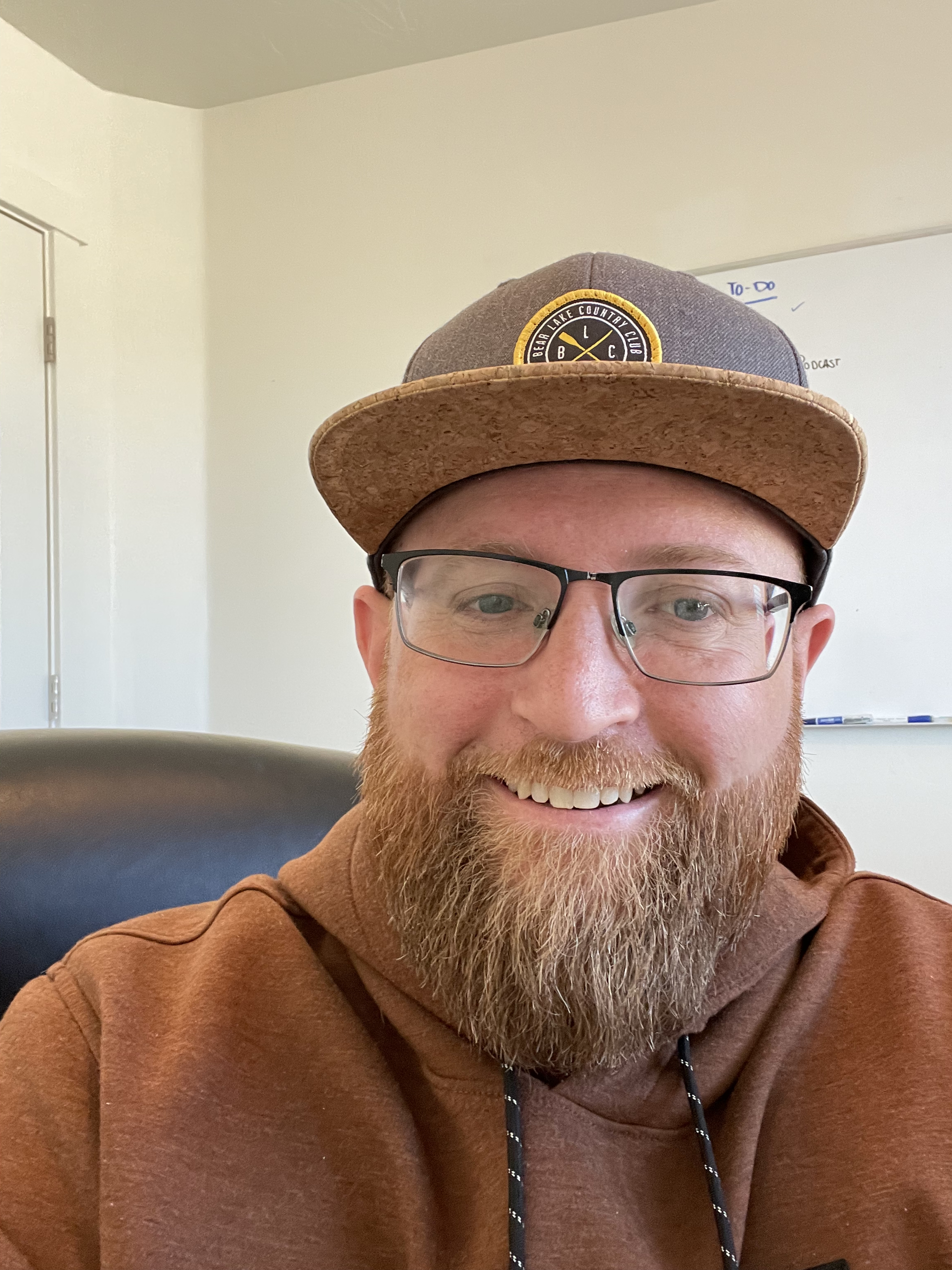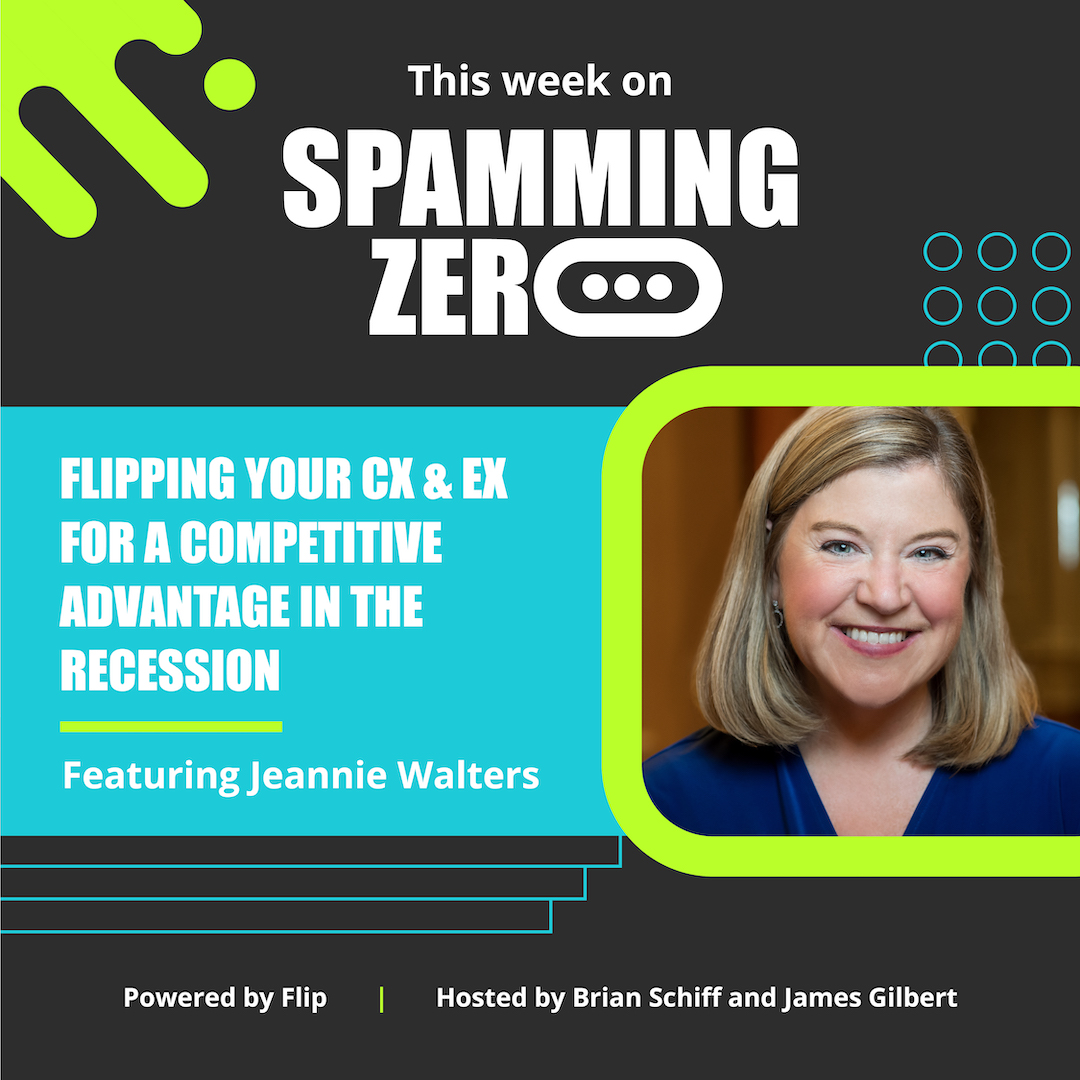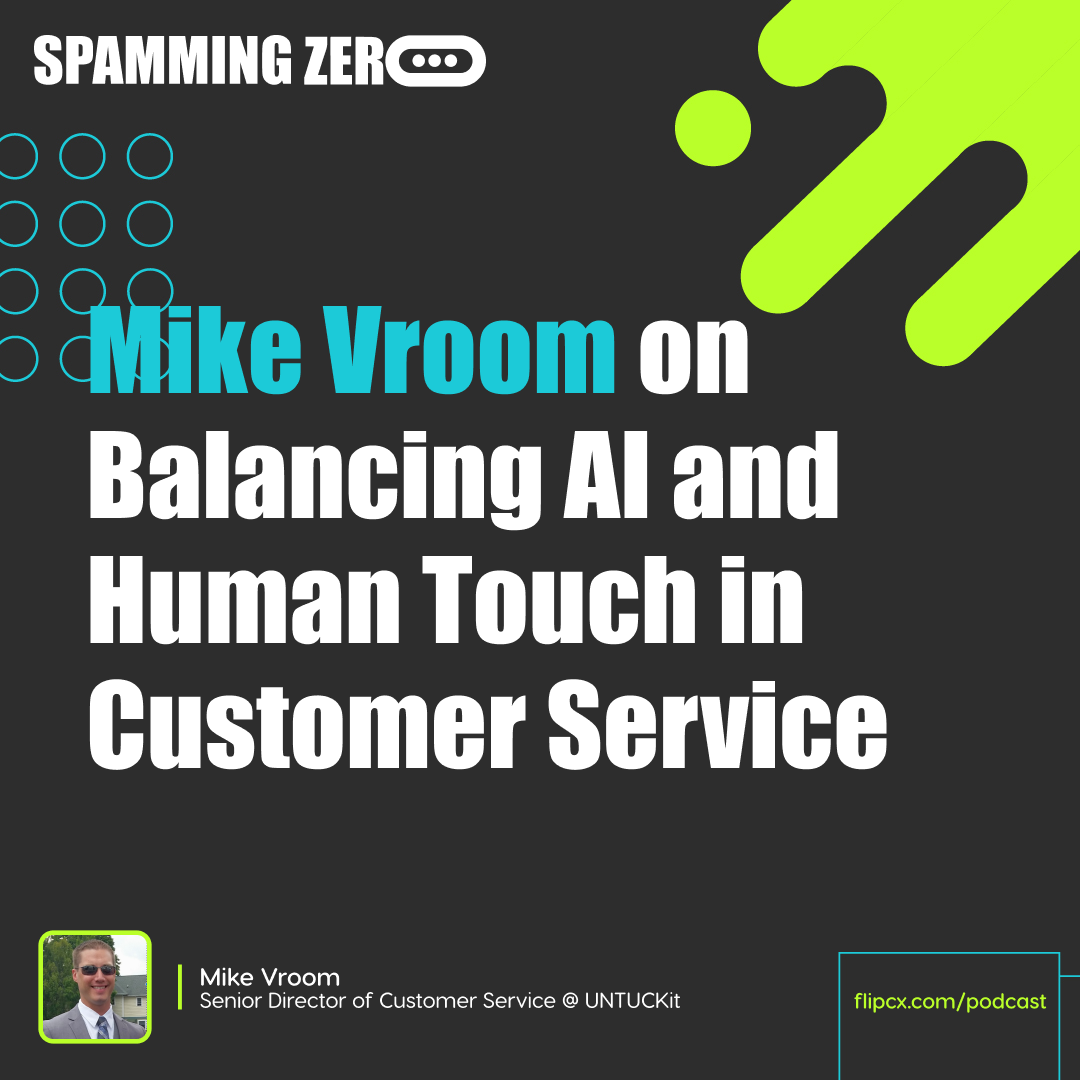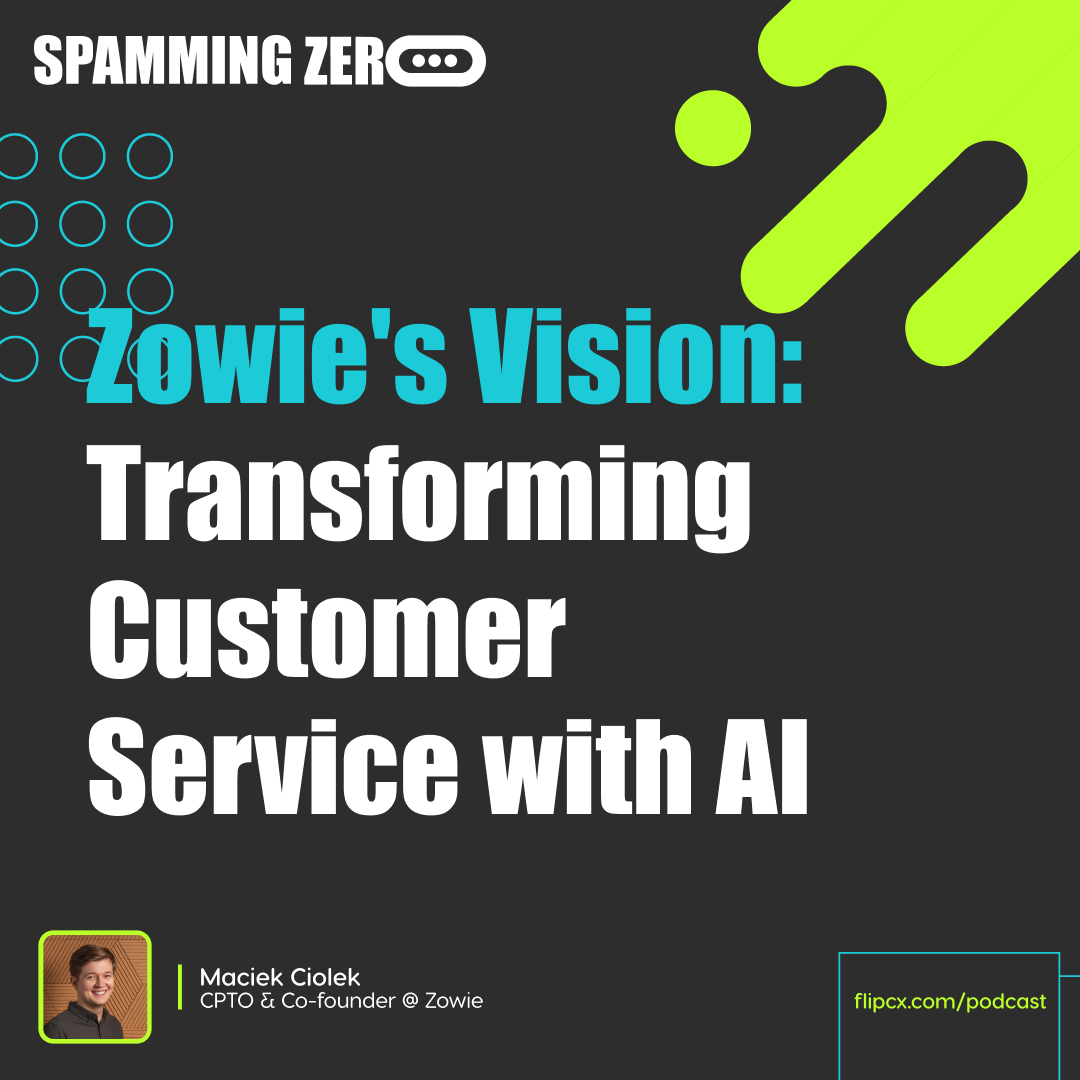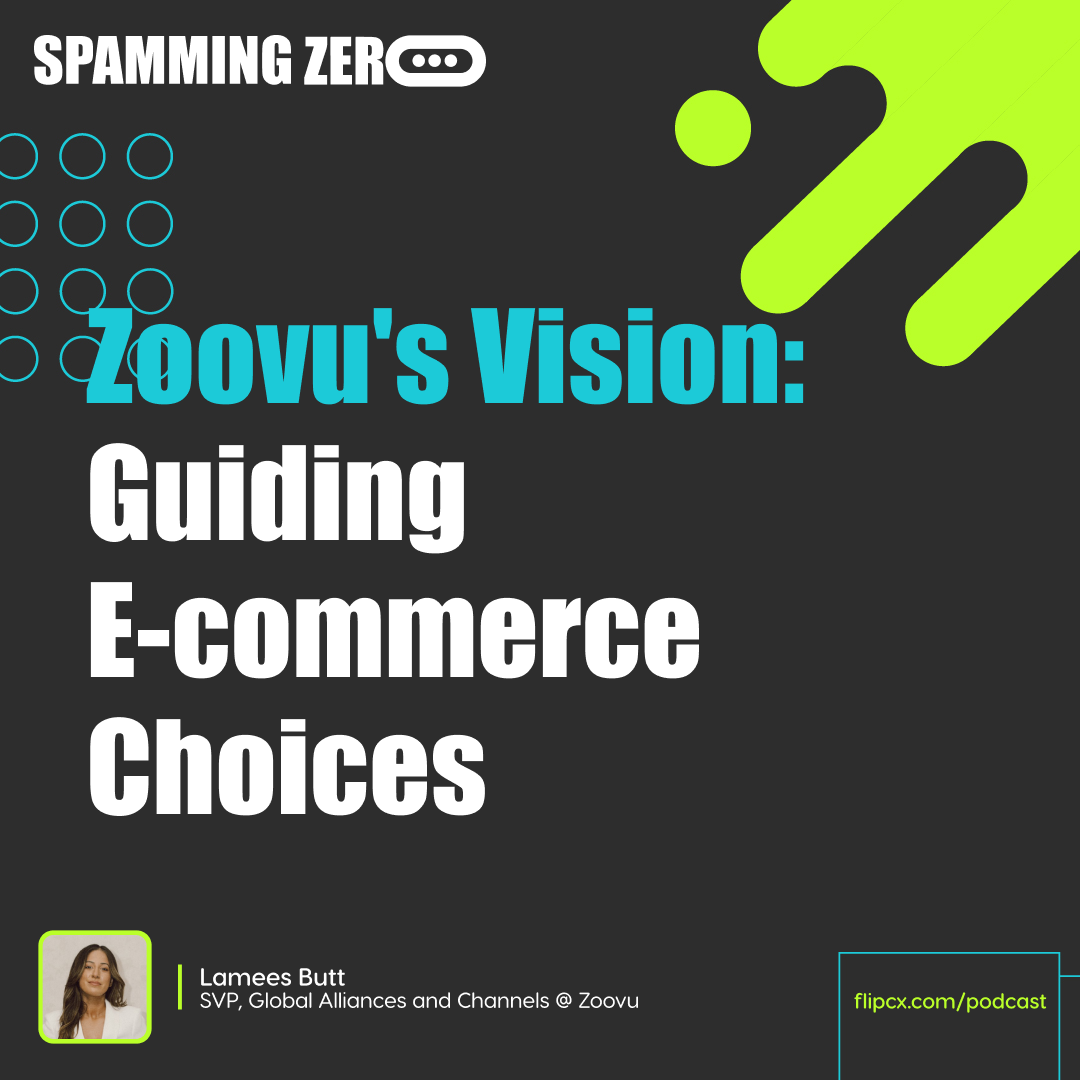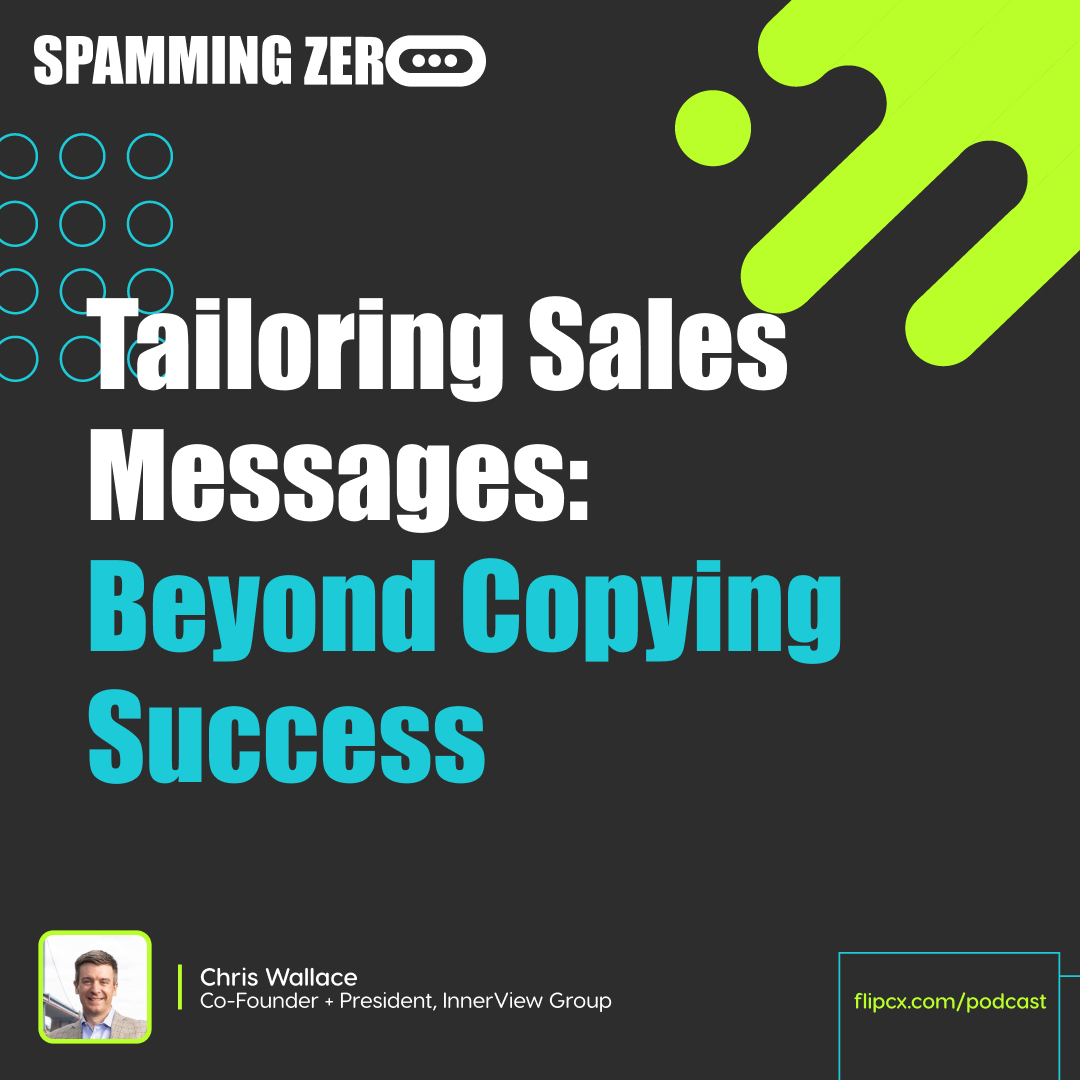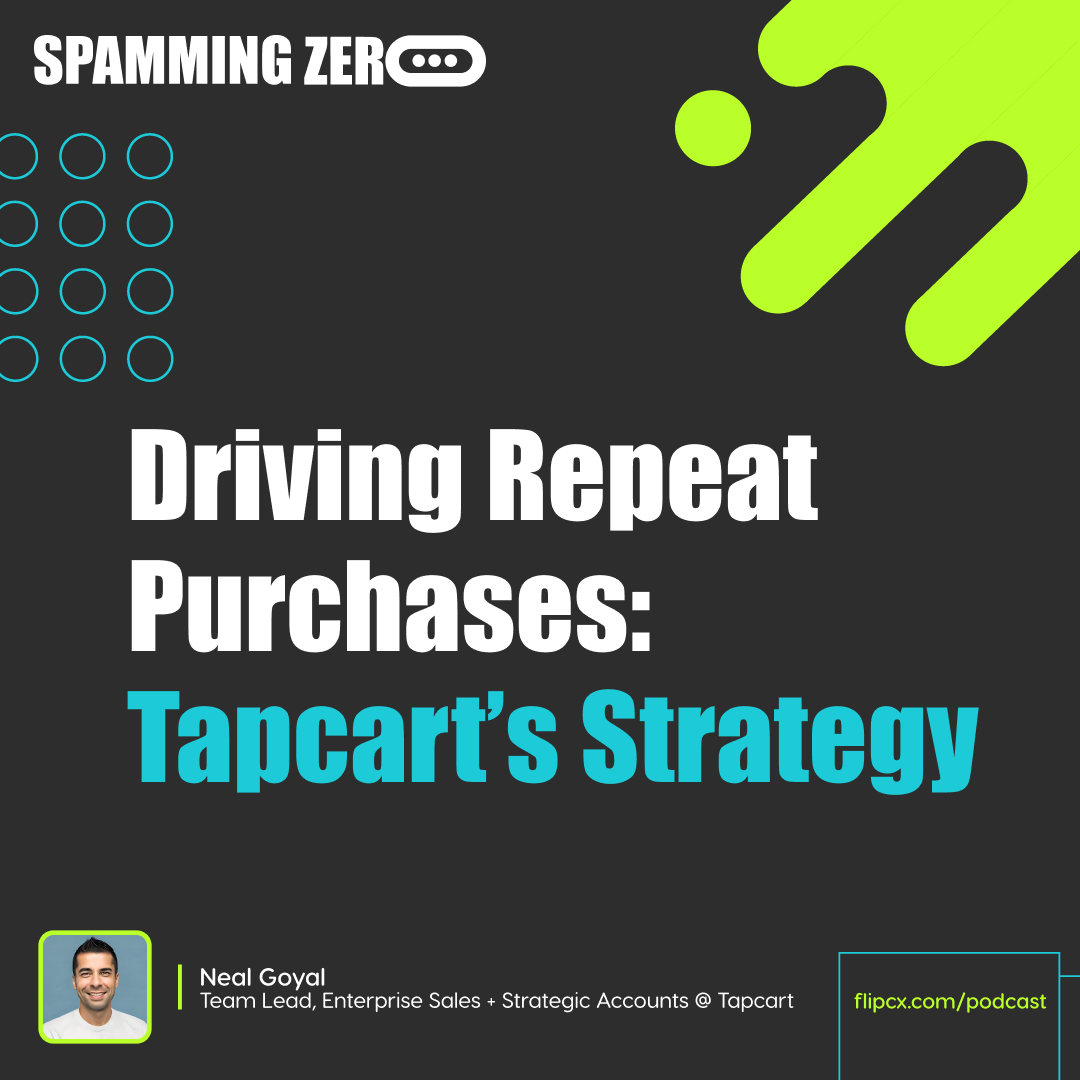Episode 8: Flipping Your CX & EX For A Competitive Advantage In The Recession
- 0.5
- 1
- 1.25
- 1.5
- 1.75
- 2
James: Hey, everybody. Welcome to another episode of Spamming Zero. So we are what episode... I think we're coming up on episode six. Is this six or seven? I can't even remember, but I'm telling you, things are just moving really, really fast. And we are so excited that so many of you have joined us on this journey so far. Excited about today's episode, because today we're going to be joined by one of the people that is just one of the greatest human beings I've ever met, just super kind and super nice, Jeannie Walters. She's also one of the top influencers when it comes to customer experience that there is. She's the CEO and founder of Experience Investigators, which is a global experience consulting firm, and she has over 20 years of experience helping companies improve loyalty, retention, employee engagement and just overall customer experience. I've known Jeannie since 2014, and I'm excited to have her on the show to talk about something that is coming up in a live webinar that we're doing at RedRoute. If you are not familiar with it, please join us. It's going to be live on LinkedIn on Thursday at 10: 00 Central Time. So go find us on LinkedIn, or YouTube, or Facebook. And this is a preview to that and it's about flipping your customer experience and your employee experience for a competitive advantage in the recession. Jeannie was named one of Huffington's Post top 100 Most Social Customer Service Pros on Twitter. Follow her on Twitter. Highly recommend. And just an incredible human being. Stay tuned, and we will see you soon. I'm James.
Brian: And I'm Brian.
James: And this is Spamming Zero. Welcome to the show, Jeannie Walters.
Jeanie Walters: Thank you so much. I'm happy to be here, of course.
James: So Jeannie, when we were coming up with the name Spamming Zero, it was actually Brian's idea. And he was like, " Hey, so why don't we call it Spamming Zero? Everyone calls a phone number and they want to just try to get to a human." What's the first thing you think about when you call a phone line?
Jeanie Walters: Well, the first thing I do is look at my watch and make sure I have time because a lot of times, whatever time you think it's going to take, you have to double it.
James: Longest hold time you've ever waited?
Jeanie Walters: Oh, my gosh. Well, this is terrible, but one time our neighbor, she's fine, but I had a cop show up and say she was a pedestrian. She was crossing the street. She got hit by a car. So she was in the hospital and she had just moved, but her license still had the next door on it. So they came to my house and said, " Do you know this person?" And I was like, " Oh, my gosh." So I was trying to find people to call. And then I was really worried about her. So I called the hospital and I said, " I'm checking on a patient." They were like, " Please hold." I'm waiting, waiting, waiting, waiting, waiting. Finally, it was 11: 00 at night too. So I was already in my pajamas and everything. So I'm changing with it on speaker phone. I literally took the phone with me and drove to the ER and nobody picked up the phone. It was about 45, 50 minutes, and it was for a hospital. So I laughed because she's fine. Everything's fine. I was able to see her there, but it's one of those examples where I think sometimes we disconnect from what's really happening on the other end. And people are living their lives and they're trying to get stuff done and they have other things happening. Nobody wakes up and says, " I really want to call customer service today." That never happens.
Brian: I love that. Well, I hate that obviously. But I love the way that you put that. To me, the strongest visual for me is always contacting customer service is a task on people's to- do list. And you just really need to frame it that way and think about it that way. And then the goals of it from the company on the other end become very simple and human. Delivering against them, very hard, but at least what you're going for becomes simple.
Jeanie Walters: Yeah. And I think the other thing that I think about is, what else is happening in their real lives? Because we often think that customers are, I mean, the way we do customer journey mapping and everything, it's like, they're marching through. They're so happy. And oh, if they call service, they get great service. They're happy, but why are they calling? Something is not right. They have a question that they can't get answered. I mean, there's so much. And meanwhile, like I said, they're checking their watch. They're on their lunch break or they're in the car for 10 minutes trying to get something done. And it's just like, we really have to think about what's actually happening in somebody's life, not how they're interacting with us. But why are they interacting with us and what's actually happening in their moment right there, because we've all had those times when we've had to hang up and move on with our lives. We're like, " We can't do this."
James: I think I waited two and a half hours one time.
Jeanie Walters: That just hurts my heart.
James: And it was so important that I had to wait that long. It was like, I had to leave my phone and it would be like, " Oh, yeah. Would you like us to call you back when you're ready?" And I'm like, " Yeah. Well, that happened already once before and then it hung up on me."
Jeanie Walters: Oh, gosh, that's the worst. Oh, my goodness.
James: But you wait so long on hold all the time. And a lot of times the business can't necessarily control that, which is fine. You do what you can do. And I think this happened, especially during the pandemic, when volume of calls went through the roof and whole times were just insane all over the place. It was one of their only ways of communicating with the business and a brand because they couldn't go to the brand. This happened a lot with financial institutions. I know that because I was helping serve that industry for a while. And they didn't even know what to do. We don't have people coming in our branches anymore. How do we manage people's money? And there is a natural negative part of calling just a brand in general. But you bring up a really good point that I love, which is this idea that every single moment that a brand has with somebody matters. And it's deeper than just the positive and the negatives and the sum of all those things. But it's also the person on the other line that's calling your brand, they're not thinking about, " Oh, well, I'm dealing with the customer service team. That's different than what I dealt with the sales team." Peter Mahoney, we had on this show a little bit ago and he put it beautifully. And that's just like, they think about your brand as one cohesive brand. So all the people that are managing all the little touch points, like your customer service team might be handling those specific touch points. Sales might be handling something different. Marketing would be handling something different. People don't see it that way. They see it as one brand, that's their experience, and it's the sum of all those parts.
Jeanie Walters: I call that customer journey by org chart. We tell customers where they are in our org chart instead of actually respecting the journey that they're taking. Because when I do presentations, I have this slide of there's a sign next to a sidewalk. And it says, " Please use the sidewalk." But there's clearly a worn path through the lawn diagonally. And what they needed to do was wait for that path to be created by the people walking and then put the sidewalk there. But they didn't. They put the sidewalk where they wanted the sidewalk and then they said, " Everybody better do it this way." And customers are like, " Nope, we're going to do it the way that's best for us." I mean, I do a lot of journey mapping with clients and I cannot tell you how many organizations say, " Oh, we have journey maps." And they don't. They have what they believe is the process inside. So they say, " Well, first they go to marketing. Then they go to sales. And then we introduce them to their account manager," who they've never met. They've never heard of. " And then we force people through how we are set up." And that's the same thing you're talking about. I mean, this just happened to me today. I had to call... I'm going to have to take a deep breath as I'm telling the story. But I had to call to reschedule a doctor's appointment. And I called the number for the office. And it was like basically saying, " We're not answering the phones in the office anymore," because everybody is short staffed. I get that. So you have to go into your account. Well, of course, I couldn't go into my account because of various things like that weren't working. So then they put me through central scheduling and when they picked up, I said, " Well, I need to reschedule." " Oh, that's somebody else. I need to send you back to the office." And I was like, " No." Too late. I'm in the cycle. I mean, things like that happen because on their side it works great. She just sent me to where she's supposed to send me. That works, but they're not looking at it from that customer's perspective. And that's the disconnect that we still have in most organizations, is that we think our processes work great but we never take the time to really look at what's happening with the customer.
James: Brian has big smiles. By the way, if you watch our podcast, not just listen, you will see Brian. He gets really big smiles. And that's when you know something is very, very good that's being said because he gets really big smiles. He can't hide it.
Brian: I've also been wondering whether you're starting to pick up on the facial cues of like, " Oh, I have something that I want to like jump in and say," and that way we're not crossing over each other.
James: I'm trying as best as I can. So Jeannie, shift gears a little bit and it could be the very same topic, but I'm curious. What is something that is just like top of mind for you right now? What's your hot take?
Jeanie Walters: I think there's all this discussion right now around the angst of automation, the hand- wringing of the robots are going to take over. And it always reminds me of when I... I'm going to date myself here, but one of my very first jobs, the CEO was very passionate. He was the founder. I totally get that. But he was like, " Voicemail, what is this voicemail thing? That's ridiculous. We need real people." So it was so frustrating as somebody who worked there because instead of having voicemails, I would have all these little paper slips of call so and so back, call so and so back, even though we were living in the age of voicemail. Everybody else used voicemail. And so when I hear that discussion of, " Oh no, people need people all the time." I'm like, " No, if you do it right," like today is a perfect example of if I could call somebody, call a number and handle that in an automated way, I would be happier. But instead I have to leave a message and hope that they call me back, not during this podcast recording. And it's like all the extra steps. So I think sometimes we put too much emphasis on the fact that, yes, humans are really good at certain things and we absolutely need humanity in certain moments. But a lot of customer experience is just helping somebody get something done faster. I think when we talk about like, everything's got to be a wow moment and everything's got to be these things. No, they don't. I mean, the mission of my company and you've heard me say this before is to create fewer ruined days for customers. And that's because that's really what we're trying to do. We're trying to get somebody to where they need to go so that they can feel a certain way. And sometimes that feeling is just, " Oh, I got that done. Cool. I'm going to move on with my day." And if we can do that with accessible and easy and respectful and personalized automation, then I think we should stop the hand- wringing about it.
James: Yeah. I want to unpack this a little bit. I don't mean to make this about anything related to RedRoute at all, but it's very prominent for us because we help solve through automation. I'm going to give you some examples of what I feel like is true. And Brian, we'll get some more smiles from Brian right now, I know it. So think about what Alexa and Siri have done to your day to day lives. And you may be thinking though, those that are listening, you may be thinking, well, " It's really not done anything." Well, let me give you examples of what you're not thinking about. You get in a car today, your phone connects to your car and you get a text message. You then give it a prompt and you say, " Hey, Siri, text my wife back or text this person back." It's all through voice. We now play our music primarily through means of saying, " Hey, Siri, play this song." Or, " Hey, Alexa, play this music." We turn our light bulbs on through voice. We do all of these things now in the consumer day to day that are all done through, you guess it, automation. That's automation, folks. And what's so interesting to me as a marketer is how that has changed the way we need to be writing content because now, voice search outperforms a Google search, and this isn't by a small measure, folks. This is by a huge one. Automation, when done right and when it's solving a problem quickly is the key to all of it. It's what creates good experience. It's what makes memorable experience. And if you really want to think about unpacking that wow moment, because I know that's kind of become buzzy. I kind of believe in the wow moment a little bit. So I'm going to combat this a little bit, because I do think that there is a difference between trying to be so focused on a wow moment that you forget about the basics. And you forget about the idea of like, " Whoa, why are we here to begin with?" And that's to solve the problem first, but there's an icing on the cake of making the solving that problem entertaining, which that to me creates the wow moment. I think to myself all the time, you waited on hold for 45 minutes. I think the average time during peak season is at least 40 minutes for most brands, something like that, crazy. Maybe for higher call volume call centers, it might be 20. I waited two and a half hours. Imagine you had two and a half hours of my time and you did nothing to build my relationship. You did nothing to make me like your brand more. You did nothing to get to know me more. You did nothing to get any data from me. You did nothing but let me sit there on hold. And I think this is a very, very strong untapped potential.
Brian: I kind of think that it's gone through peaks and valleys where almost it's hopping from, are the robots going to take everybody's job to, can these robots do anything? And do they belong here at all? Is it even AI? Is it fake? And all these companies are lying and this jumping back and forth that happens over the last... I mean, even going back like 25 years in this space, there's been this jump back and forth between robots are the future, and they're going to take over and they're going to get rid of all the people to the robots stink and they can't do anything. You got to clear them out entirely. And I think that the robots today, by and large, fall more in the bucket of, does this really belong here at all? Is this providing value at all? To be totally honest, and we've obviously from our business standpoint, gone deep into this technology and we understand the way in which these things are built, what the different vendors do, all of that fun and juicy stuff. And to me where it falls down is it's not the technology. You speak to an Alexa. Alexa needs to be able to answer any question on the face of the earth. That is a really, really hard technical problem. And it's in the voice channel. When you talk about answering the questions that people are calling customer service for, that is way easier. You are operating in a much smaller domain. To me, the issue that is producing bad robot experiences is the tools that are out there are requiring the people inside these organizations that run customer service departments to build that AI experience themselves. They are giving some sort of gooey with dragon drop flow building things, hook in your own APIs, come up with all the training data yourself, go and build this product yourself, using some very basic form of tooling. And then you're taking this person who, they're not an AI product builder. They don't know what they're doing. They're not an expert in designing and building these experiences. But they're saying, " Okay, go and do it. Or you can pay us seven figures and we'll have a consulting team come in and build it." And then they build what they build and then they leave and they move on to the next project. And it sits there and goes stale over time. So I think that it's in this place where the technology is there. The raw underlying technology is there. It works, but the problem that has existed is in the delivery of the technology to the market for this specific use case of handling customer support interactions. We do it differently and you can certainly go and kind of check us out online, and our approach to this sort of solution. But to me, when we think about the robots and where they're at in their journey, yes, it feels like it's a little bit kind of up on the hype scale again and people are getting excited about it. But a lot of the experiences, we talk to people every day. How much volume is your chat bot really handling? And a lot of times, it's underwhelming.
James: Have you seen that viral video of the robot shooting a basketball? You've seen that?
Jeanie Walters: I don't think I have. I feel like I've seen every viral video because my kids always run up with their phones and show me.
James: You got to look this up. And for those that are listening, go look it up too. I'm going to laugh at this because this caused such a big uproar. People were like, " Oh, my gosh. How soon before we're just watching robots play basketball." Just go watch this video. First of all, that robot moves incredibly slow. I'm fat and I can move faster than that on the court, okay? So let's get that out of the way right now. Number two, it took that robot three seconds to shoot the basketball. Sure, it made a full court shot. Sure, a half- court shot. Sure, it made a couple of threes, but Brian, you've seen me shoot. Do you think it could outshoot me? Absolutely freaking not. Do you think it could play defense? Is it going to be able to jump? It might be able to jump, but it's not going to be able to jump the same way as a human. I remember this whole trend of marketers getting worried about how it was going to take over marketing, and robots were going to do marketing for us, and we were no longer going to have jobs. You know this, Jeannie, you remember all of this stuff. And it's crazy to me. Let's just call it out for what it is. There will never be a moment that robots can be so sophisticated that it can replace a human, and here's why. No matter how we look at it, humans want some sort of interaction with another human. And sure, we can make robots and automation more human- like, and I think that that's a good thing. But no matter what, it is the combination of automation and humans that creates powerful experiences. And that is ultimately what we should all be striving for in our brands, in our interactions, and how we approach AI and how we approach robots. I would never believe in any way that iRobot will ever happen with Will Smith. It ain't going to happen.
Jeanie Walters: Right. And I love the way you said that it's the combination, because one of the things that I always say is when we are talking about customer experiences in our organization, it's really easy to tell ourselves the good stuff. Whenever I talk to anybody for the first time, they say, " Oh, you don't understand. Our customers love us," because that's who they're thinking of. They're thinking of the customers who do love them. And so one of the things that I recommend is thinking about your worst customer on their worst day because if you can solve their problems, then you can really do a lot more. But you think about somebody who is in a situation... And we've all seen this where, yeah, processes, they're all working great. Automation is working great for 99.9% of your people. And there's that one customer who calls in with such a wacky thing that we don't know how to solve it right away, or something is urgent, if you're in financial services or healthcare, all these different things and they need a person. And if we're making them sit on hold because that person that they need is literally saying, " Let me tell you where the login is 50 times," instead of actually going through and helping somebody who needs it, we're missing an opportunity to actually show up with more humanity when it really matters. I like to say save the people for what people do.
James: One of my favorite examples is the brands that, one, don't have a phone number. And what they do is they will put a chat up. There's no way to communicate with a human being, and it's an entire giant library of FAQ questions. Find your answers-
Brian: Those are so sad.
James: All of our search... But the crazy thing is so many brands do it. I cannot stand it.
Jeanie Walters: And they do it purposefully.
James: I know they do.
Jeanie Walters: They do it purposefully because they don't want you to call.
James: Yeah. And that's the part that I would love for you to dive, both you and Brian, dive deep on this next part. I want you guys to help our listeners understand this. That little area of like, " Okay, we're a brand, we've made a decision work. We're going to get rid of our phone number. We're going to do all this," that we just talked about. How can brands measure the negative impact of that and the positive impact of that? Because I think that's the key.
Jeanie Walters: First of all, I bet they have a sales number. I bet they still have a sales phone number.
James: Oh, yeah. Fire by Jeannie. I like that.
Jeanie Walters: Because that shows their priorities. They just want to get you. They don't really care about once they get you. And part of it is, as business people and traditional business education and everything else, you look at a traditional business plan, and what does it talk about? Acquisition, acquisition, acquisition, how do you find the people, how do you get the people. That's where everything is. And then you turn the page and it goes into operations, which is all internally focused. So it's like once you get the customer, you don't have to worry about the customer. That's how we have been trained. And that's why this is so hard because we are literally saying, " We need to flip the script." And if you don't serve people, well, first of all, good luck with that. They will tell everybody they know, every time I sit on a plane or anything and say I'm in customer experience, I always hear about people's worst experiences. They will tell a stranger about those. So the word of mouth, negative marketing alone, I mean, that's one thing. In today's market, it also affects your employee retention and how you hire people and who you hire, and if they want to work with you. And then if you're spending all your money to get sales, you're going to have high costs of service. You're going to have low retention, renewal rates. You're going to have high customer return. You're going to have miserable employees who tell their friends not to work there. I actually just worked with a client and we were in a workshop and I said, " How many people have told a friend to work here?" And one of them said, " I can't." And that was a wake- up call to the leaders because it was all about the fact that the customers were so miserable that the employees are miserable. So all these things go together and it just baffles me that we still treat customer experience like it's this extra thing, or it's nice, or it's fluffy. It's a flipping winning business strategy every single time, every single time. In a recession, in anything, you win with customer experience that's done well. And a lot of that is understanding your customer journey enough to know when and how and where to serve them in the best way. So if you're taking a phone number away, I've worked with clients. One of them actually said, " Oh, we just turned off the phones because it was getting too bad." And I was like... If that's our answer as business people, shame on us. We need to lead, and that's not leading in my humble opinion. So that's all I think about it.
James: That was a mic drop if I ever heard of one.
Brian: Yeah, that was amazing. I'm not sure how I could possibly follow that up. So we had somebody on the show a couple weeks ago and we were kind of deep in a topic, ping- ponging it around, going back and forth. And the idea came up of prioritizing the internal efficiency metrics around customer service and customer experience, over prioritizing actually helping the consumers solve their problems and have a good experience. And instinctually what Ben said was, " If you don't prioritize the customers, then you won't have a business." And I think that that's the really simple of it. You will see it across every metric that you're looking at, and you dropped a lot of them. Retention, lifetime value, depending on what line of your business you're in, everything kind of rolls up into there, but it's like... What are you kind of doing then? James, you talk a lot about brand promise, and a company has something that they stand for and it's something even more than their product that they're selling to their customers. And if it is a situation where you're getting somebody to swipe their credit card and then you're running and you're hiding, is that in your brand promise? Is that kind of what you're telling the world that you stand for? And the hard part in all of this is executing against what is the very simple thing that consumers want. There are a lot of problems where it's like, we don't know what people want and it's this endless maze of finding that answer. When it comes to customer service, it's simple what people want. Got something on their to- do list, they want to cross it off when it's convenient for them, how it's convenient for them, and they want you to be there and be able to provide that. And where it falls down is in the execution and for the companies that are kind of throwing in the towel on that. There's actually a famous, and I'm going into a different sort of rabbit hole here. There's a famous Reid Hoffman quote actually, the founder of LinkedIn, wrote his book Blitzscaling, which is sort of a bible of sorts for some in the startup community. And he has all these different rules, laws, concepts that he lays out. And one of them is basically, don't worry about customer service. While you're scaling, just don't worry about it. It doesn't matter. I've actually personally been playing with some content to create around that. A lot of companies that grew up kind of idolizing that and used that as a guidepost for the future and what to build. Now when we talk about the recession, they're kind of coming to a head here and maybe they've raised a lot of money. They've poured a ton of money into customer acquisition. And it's always been like, " Oh yeah. We're figuring out operational things. We're going to grow the LTV over time," whatever, whatever, whatever. Now, suddenly the venture dollars are gone, the LTV is still terrible. They got bad reviews, they got bad everything. And they're sitting there and they're like, " Whew, what now?"
Jeanie Walters: I think that's an important thing to highlight because there is this attitude about service is an expense. It's a cost- centered. And if you actually think about it in the way that I believe we should think about it, we always start with something we call the customer experience mission. And that's really like, who are we and how do we show up for our customers no matter what? No matter what product they're buying, no matter what? What agreement do we have there? And the reason that we start there is because sometimes you have to make trade- offs. You have to say, " You know what? We're not going to be the fastest, but we will be the most accurate," or the vice versa. There are times where you can't be all things to all people. But if you get really clear on that, then everybody in your organization isn't just making judgment calls based on what they think in the moment, which is what happens if you don't have that. And then we go into something called a success statement and that's where we literally link, " Okay, what are your organizational goals here?" " Well, we want to maximize profitability X percent." Cool. One of the ways you can do that, well, the very basic calculation there is, " Hey, let's increase revenue. Let's decrease expenses." Cool. So if you do service better, you actually do both of those things because you're going to increase revenue long term, and you're going to keep customers who otherwise would walk and you're going to decrease the cost of service when you do it well. So there's just so much here, but the math is a little harder. It's a lot easier in sales to say, " Look, we got new customers," and not even talk about the ones who walked out the door. This is a little more complicated, but it all connects.
James: I don't know if the math is harder. I think it's more so the area of the formula that we're focused on is the wrong part of the formula. Here's what I... We all know this. If you find a raving fan of your brand and ask them to go tell people, do you think that's going to be cheaper or more expensive than if I run$50, 000 of ads? The problem is we're focused on the wrong part of the formula. I don't think it's the math is hard. I think it's more we're focused on the wrong part. And a good example of this is I think the expectation of where we should focus on that part of the formula is often set, at least from staying on the context of seed early stage startups that are trying to grow on taking venture capital. It's actually done at the VC level, unfortunately. Sorry VCs, but it's true. You're so focused on the acquisition side that they're not focused on the formula side of this. By the way, have you ever heard of the buzz term, influencer? Does everybody realize why that is even a term? It's a term to solve this very problem. Does anybody know why the term fan exists? It's a term for this very problem. This has existed since the beginning of time and we just keep focusing so much on the wrong part of the formula. And I don't know if there's a single person alive that would argue that retention yields more profitability than acquisition, because there's just no way you can combat that math. There's just no way you can.
Brian: Think about a basic funnel and org structure that most companies are built around. And you've got the top of the funnel. You have marketing and in a B2B environment, you have sales as well. And what's their job? Their job is to bring growth to the business and to grow revenue and to acquire new customers. Then you have post purchase. What departments are there right down the funnel? You have retention, you have customer success, you have CX depending on kind of how it's all set up, you have support. And classically according to funnels, their job is to keep customers. And it's not necessarily explicitly to drive new business. VCs find a viral growing business where it's like the number one growth channel is word of mouth and they all line up with their checkbooks. Everybody wants the outcome of what comes out the other side. But I do think that there is just kind of in the structure of how organizations work. There is some mental blocker around marketing is bringing growth and post- sale is retaining customers. And if we can retain customers at the same rate for less money and put that money towards marketing, then we're going to have a bigger pie in the end. So I can see how people end up thinking about it that way while, of course, agreeing wholeheartedly with what you're saying.
James: By the way, I do see it too. I see why people think that way and see that way. I just think let's pull the whole formula, put it in front of people. And as businesses, let's determine, especially right now that the focus really should be more on the latter with the retention as much as possible. But anyway, sorry, Jeannie, go ahead.
Jeanie Walters: No, that's okay. I was just going to say, I think sometimes also, we being kind of leaders and investors and everybody, fall into this magical thinking that, you know what, every single person is a prospect for us, and there's unlimited growth. And there are still a finite number of people on the planet. And there's a more finite number of people who are qualified and interested in what you sell. And there's yet an even more finite number that can afford it and wants it at the right time and all those things. And so sometimes when we focus so much on the new growth, we miss the opportunity of, you know what, we can't get the whole pie. But let's say we get 50%, wouldn't it be better to hang onto that 50% than lose 30% of it and not have that market to even go back to? And what comes to mind here, can I use a brand? Can I talk about a brand?
James: Oh, yeah.
Jeanie Walters: I am a huge fan of this company. I literally love my Peloton. I love it. I know all the instructors, they're my best friends. My family makes fun of me. They could hear me singing when I take my classes, so I love my Peloton and I love all the apps. And what they did was they invested so heavily in growth because during the pandemic, everybody wanted a Peloton that all of a sudden they were like, " Whoa, not everybody wants a Peloton, right?" That's a great example of that kind of thinking of like, " Wow, we're going to get everybody everywhere. And so let's put all of our eggs in that growth basket." And then all of a sudden, they had some missteps with their customer experience. They were kind of struggling with delivery. They were doing all these things because they were so focused on getting people to plop down the credit card that they were missing this. Now again, I love them and I think everybody should have one and it's really fun. But it's just a good example of what can happen because they had to scale so far back so quickly they had to stop some manufacturing all sorts of things, because they just realized like, " Whoa, maybe we hit kind of the cap on where we are today." So that's I think where we need to think about, is not just how do we constantly funnel growth but what do we do to really respect and maintain the people who are already on board.
Brian: Time for one more, James, or you cut me off and put the bow on?
James: Well, we are at time.
Brian: I guess me and Jeannie are going to have plenty of time coming up here on our LinkedIn, YouTube and Facebook Live, which all of you are going to have to tune into. So, we will cut it here.
James: We got to end with the final question, which we ask everybody. Tell us about an unforgettable experience that you've had.
Jeanie Walters: I always love to talk about independent places for this. And when my kids were younger, there's a local toy store here in Oak Park, Illinois, Geppetto's. Shout out to Geppetto's. And they had this incredible service around the holidays where you could buy the present. They would wrap it and keep it for you until Christmas Eve. I mean, just a little thing that as a parent with young children, I just remember being blown away by that and thinking like, it was so unexpected that they offered that. It's a small store. I don't know where they put all these things and they just made it magical for both the kid, and they relieved all the stress for parents by this really small thing that made a huge difference.
James: Geppetto is a really smart name for a toy company because I'm pretty sure they had to have come up with that from Pinocchio.
Jeanie Walters: Oh, yeah.
James: Geppetto, he's the toymaker that created Pinocchio. That's a smart name, and I like that. Because as somebody who has four kids myself, like I would eat that alive.
Brian: Are you spending some time thinking about company names these days, James?
James: Oh, yeah, all the time. It's so interesting that you bring that up, Brian. Stay tuned for a reveal in September.
Brian: Hey- o.
James: All right. So Jeannie, thank you so much for joining us. We've had a blast with you and we'll continue to have a blast with you very soon.
Jeanie Walters: Sounds great. Thank you both.
Brian: Thanks Jeannie.
DESCRIPTION
We’re living in tricky times. A recession is looming, you’ve been asked to cut costs, you’re worried about your customers and your employees… and well, frankly this damn heat is messing with your mood. Am I right?
We can’t do much about the heat, but for the rest of it we strongly suggest…
It’s time to flip your CX and EX to get the competitive advantage. How? So very glad you asked! We sat down with one of the world’s foremost customer experience experts—who also happens to be one of the kindest individuals you’ll ever lay ears on—for a masterclass on the subject.
Jeannie Walters is CEO and Founder of Experience Investigators, a top CX Influencer with over 20 years experience advising companies, and our honored guest this week on RedRoute’s Spamming Zero Podcast.
BIG FAT NOTE: We can’t get enough of Jeannie and her spectacular advice on this topic. So, naturally, we snagged her for a LIVE (LI, YouTube, FB) Webinar with our own Brian Schiff coming up this Thursday, July 28th at 10am CDT. Register HERE!
Now, where were we? Oh right… giving you the CX keys to the kingdom. ;)
What’s Covered in this Episode?
- Looking through the customer lense
- Moments that matter with your brand (hint: that’d be every one of them)
- Journey Mapping: are you really doing it?
- Jeannie’s hot take on the role automation plays in excellent CX
- AI + Humans = powerful experiences
- Tips to maximize profitability – recession or not
- And more
Ready for more fantastic Spamming Zero conversations ahead? Listen, rate, and subscribe on Casted, Apple Podcast, or Google podcasts.
Today's Host
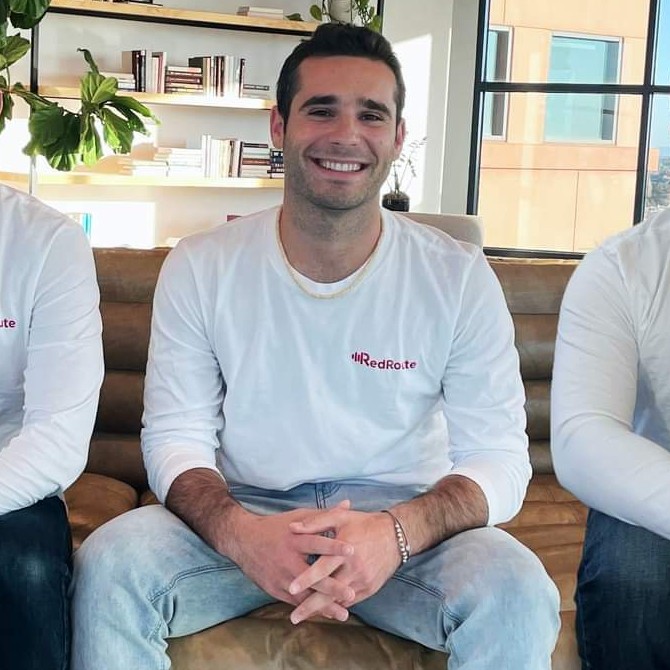
Brian Schiff
